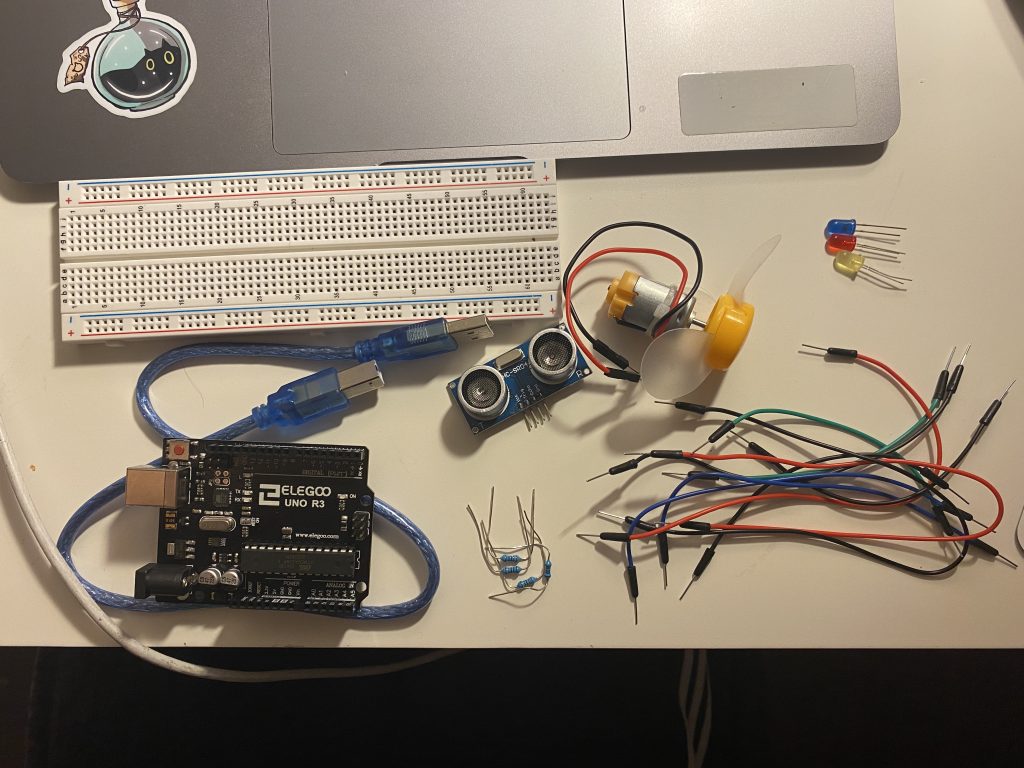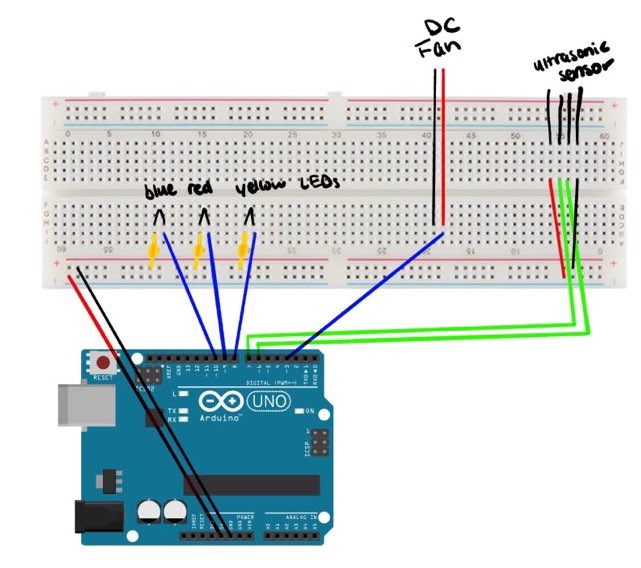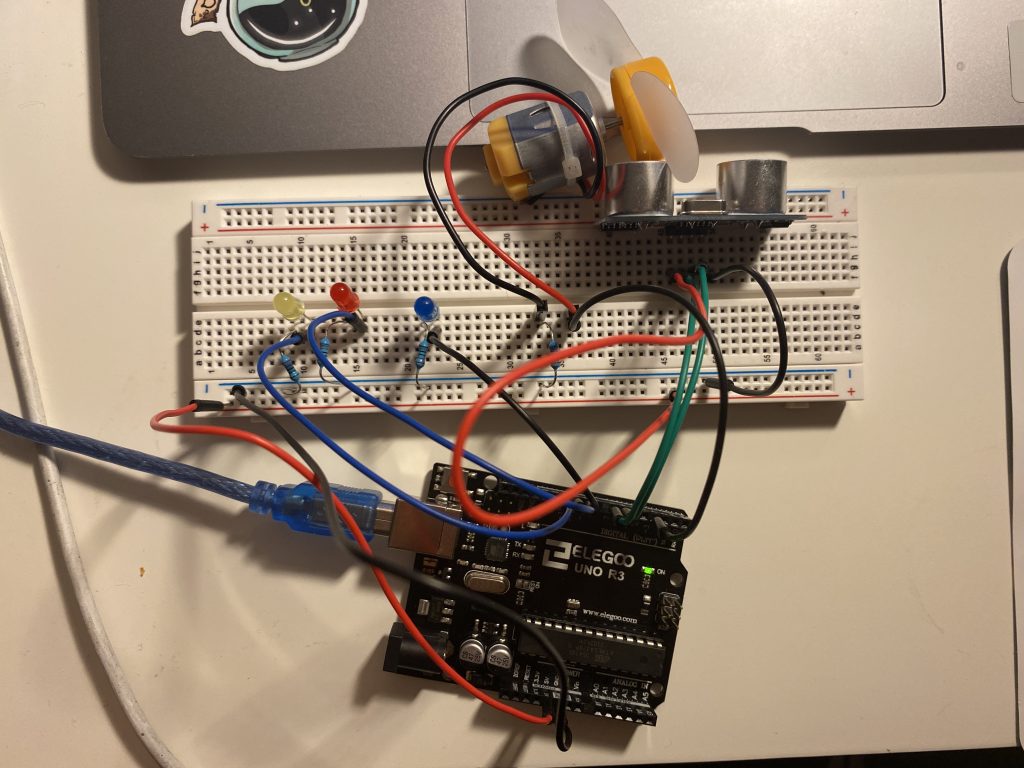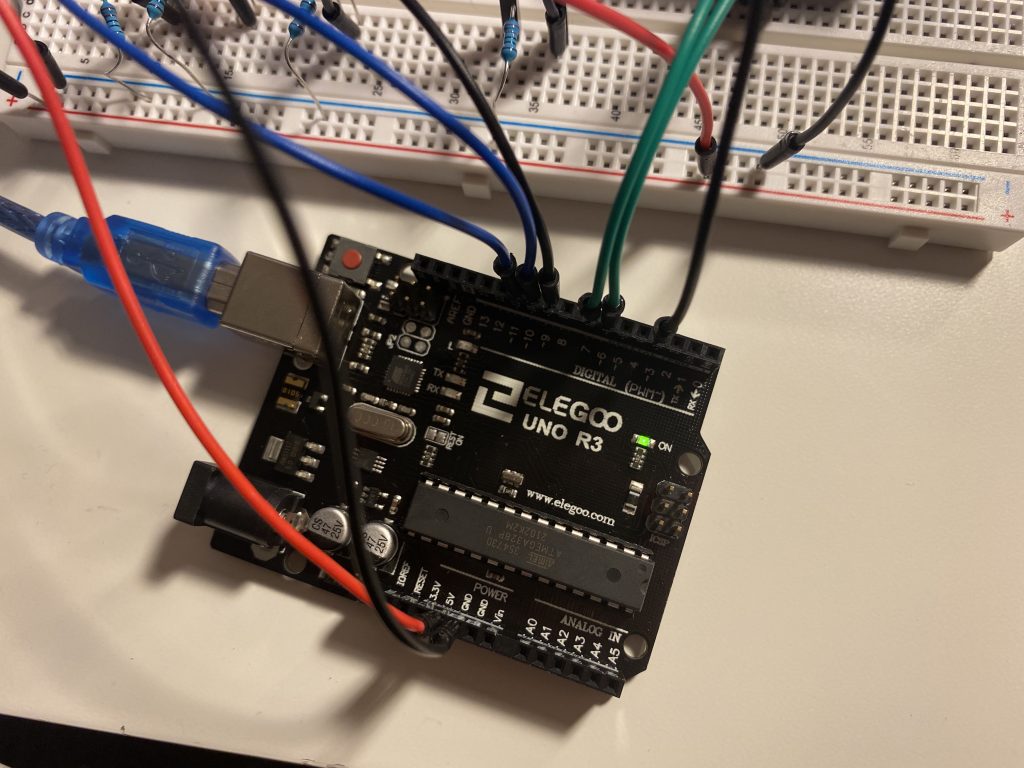Ideas
I started off wanting to make a buzzer and sensor for my Arduino, so that if any intruder came into my room, the alarm would go off and a motor would also turn on and throw spiked tin foil balls at them. Unfortunately, I don’t have a catapult and my buzzer sensor didn’t seem to work. The two prongs would not fit into the bread board. Therefore, I decided to make a temperature and humidity LED screen, but that didn’t work out either because I needed the 10k potentiometer, which was missing from my kit. Therefore, I finally settled on a sensor that turns on just LEDs and a motor.
Sensors Used
The sensor I used was the ultrasonic sensor in order to detect proximity. I set it such that if distance was less than 15, the motors and LEDs would all turn on. I used the ultrasonic sensor because it was the only sensor for detecting proximity and made the most sense if I were trying to alert myself of an intruder.

Other materials used were a breadboard, the elegoo uno board, a dc motor w/ a fan, 3 LEDs, wires and 4 220 ohm resistors.
Wiring Diagram
Below is the wiring digram. I used the same format as the wiring we did in class with the humidity detector. The only difference is that I have an ultrasonic sensor instead, and an additional DC fan.

Images of my design
Below are images of my construct. I had some trouble getting the fan to work and the sensor wasn’t the best but when I waved my hand in front of the sensor, the LEDs would light up. I set the distance to be 15, and I tried setting it to different distances as well such as 25 and 10, but 25 wasn’t very accurate, and 10 wasn’t effective at detecting intruders at the door, so I left it at 15. The fan is meant to be a placeholder for what should be a catapult aimed at the door.


Difficulties
The biggest difficulties for me were understanding the wiring, looking up different tutorials for that, understanding the arduino code syntax, and getting the overall board to power up. I haven’t done anything related to wiring before and I haven’t done anything related to circuits since high school. Therefore, I needed to brush up on my knowledge by looking at what we did in class and watching this video. I also referenced this other project and tutorial for help with the motor and sensor. The code was a little confusing at first because I didn’t know what libraries to include, but in the end I just used the same ones used in the arduino bme66 class. I had a lot of trouble getting the board to power up because my computer dongle is very unstable, but it managed to run for little bit before the port just failed to show up under the tool bar.
What I learned
I managed to get valuable experience in using the arduino. I better understand the arduino IDE, and how I can apply it to different motors and sensors. I better understand wiring, and how this can apply to other electrical parts aside from the arduino. I also learned how to troubleshoot code and understand arduino error messages. Overall, I think this experience will really help with our project. Our project is a breast massager, but we will use force and temperature sensors to make sure the device stops if either increases too much. This can be done with an arduino, as the force and temperature can be set as “stop if force or temp is greater or equal to x value.”
I did not use any data sheet as my wiring wasn’t super complex and I mostly used the wiring diagram and different tutorials to make my device.
Potential uses in real life
My device already has a potential use in real life. If I improve it and add a better motor + power source. I can create a booby trap/alarm for when people enter my room. For example, if someone enters my room, I can have an alarm go off, the device text my phone, LEDs go off, and the motor throw spiked balls at the intruder.
Additionally, other potential uses in real life are programming cool LED patterns for the lights in my room and texting my phone when humidity or temperature reaches a certain amount (i.e. store it w/ an item that needs to be in a certain humidity/temperature).